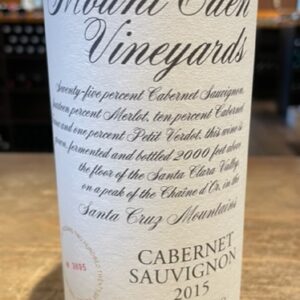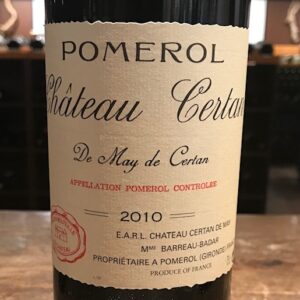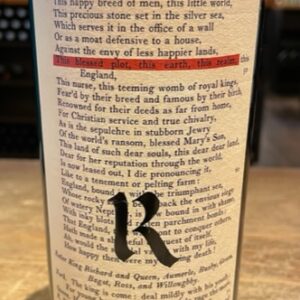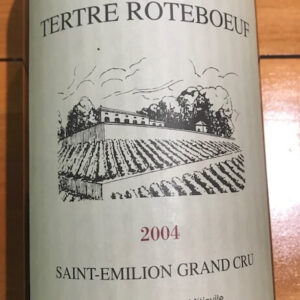Tasting Notes
Full. Impressive. Rich. Opulent. Multilayered.
Grape Variety
Cabernet Sauvignon / Cabernet Franc / Merlot
Grape Information
Cabernet Sauvignon is one of the world’s most widely recognized red wine grape varieties. It is grown in nearly every major wine producing country in the world among a diverse spectrum of climates from Australia and British Columbia, Canada to Lebanon Begaa Valley. Cabernet Sauvignon became internationally recognized through its prominence in Bordeaux Wines where it is often blended with Merlot and Cabernet Franc. From France and Spain, the grape spread across Europe and the New World where it found new homes in places like California’s Santa Cruz Mountains, Paso Robles, Napa Valley, New Zealand’s Hawke’s Bay, South Africa’s Stellenbosch region, Australia’s Margaret River, McLaren River, Mc Laren Vale and Coonawarra regions, and Chile’s Maipo Valley and Colchagua. For most of the 20th century, it was the world’s most widely planted premium red wine grape until it was surpassed by Merlot in the 1990s. However, by 2015, Cabernet Sauvignon had once again become the most widely planted wine grape, with a total of 341,000 hectares (3,410 km2) under vine worldwide.
Despite its prominence in the industry, the grape is a relatively new variety, the product of a chance crossing between Cabernet Franc and Sauvignon Blanc during the 17th century in southwestern France. Its popularity is often attributed to its ease of cultivation—the grapes have thick skins, and the vines are hardy and naturally low yielding, budding late to avoid frost and resistant to viticultural hazards such as rot and insects—and to its consistent presentation of structure and flavors which express the typical character of the variety. Familiarity has helped to sell Cabernet Sauvignon wines to consumers, even when from unfamiliar wine regions. Its widespread popularity has also contributed to criticism of the grape as a “colonizer” that takes over wine regions at the expense of indigenous grape varieties.
The classic profile of Cabernet Sauvignon tends to be full-bodied wines with high tannins and noticeable acidity that contributes to the wine’s aging potential. In cooler climates, Cabernet Sauvignon tends to produce wines with blackcurrant notes that can be accompanied by green bell pepper notes, mint and cedar which will all become more pronounced as the wine ages. In more moderate climates the black currant notes are often seen with black cherry and black olive notes while in very hot climates the currant flavors can veer towards the over-ripe and “Jammy” side. In parts of Australia, particularly the Coonawarra wine region of South Australia, Cabernet Sauvignon wines tend to have characteristic eucalyptus or menthol notes. By Wikipedia.
Cabernet Franc is one of the major black grape varieties worldwide. It is principally grown for blending with Cabernet Sauvignon and Merlot in the Bordeaux style, but can also be vinified alone, as in the Loire’s Chinon. In addition to being used in blends and produced as a Varietal in Canada and the United States, it is sometimes made into ice wine in those regions.
Cabernet Franc is lighter than Cabernet Sauvignon, making a bright pale red wine that contributes finesse and lends a Peppery perfume to blends with more robust grapes. Depending on the growing region and style of wine, additional aromas can include tobacco, raspberry, bell pepper, cassis and violets.
Records of Cabernet Franc in Bordeaux go back to the end of the 18th century, although it was planted in Loire long before that time. DNA analysis indicates that Cabernet Franc is one of two parents of Cabernet Sauvignon, Merlot, and Carménère.
In general, Cabernet Franc is very similar to Cabernet Sauvignon, but buds and ripens at least a week earlier. This trait allows the vine to thrive in slightly cooler climates than Cabernet Sauvignon, such as the Loire Valley. In Bordeaux, plantings of Cabernet Franc are treated as an “insurance policy” against inclement weather close to harvest that may damage plantings of Cabernet Sauvignon. Its early budding does pose the viticultural hazard of coulure early in the growing season. The vine is vigorous and upright, with dark-green, 5-lobed leaves. The winged bunches are elongated and small-medium in size. The berries are quite small and blue-black in color, with fairly thin skins. The Cabernet Franc grapevine is more prone to mutation than Cabernet Sauvignon, less so than Pinot Noir.
Cabernet Franc can adapt to a wide variety of vineyard soil types but seems to thrive in Sandy, chalk soils, producing heavier, more full-bodied wines there. In the Loire Valley, terroir-based differences can be perceived between wines made from grapes grown in gravel terraces versus slopes. The grape is highly yield sensitive, with over-cropping producing wines with more green, vegetal notes. By Wikipedia.
Merlot is a dark blue–colored that is used as both a blending grape and for varietal wines. The name Merlot is thought to be a diminutive of merle, the French name for the blackbird, probably a reference to the color of the grape. Its softness and “fleshiness,” combined with its earlier ripening, make Merlot a popular grape for blending with the sterner, later-ripening Cabernet Sauvignon, which tends to be higher in tannin.
Along with Cabernet Sauvignon, Cabernet Franc, Malbec and Petit Verdot. Merlot is one of the primary grapes used in Bordeaux wines from the right bank, and it is the most widely planted grape in the Bordeaux wine regions. Merlot is also one of the most popular red wine varietals in many markets. This flexibility has helped to make it one of the world’s most planted grape varieties. As of 2004, Merlot was estimated to be the third most grown variety at 260,000 hectares (640,000 acres) globally. The area planted to Merlot has continued to increase, with 266,000 hectares (660,000 acres) in 2015.
Merlot grapes are identified by their loose bunches of large berries. The color has less of a blue/black hue than Cabernet Sauvignon grapes and with a thinner skin and fewer tannins per unit volume. It normally ripens up to two weeks earlier than Cabernet Sauvignon. Also compared to Cabernet, Merlot grapes tend to have a higher sugar content and lower malic acid.
Merlot thrives in cold soil, particularly ferrous clay. The vine tends to bud early which gives it some risk to cold frost and its thinner skin increases its susceptibility to the viticultural hazard of Botrytis bunch rot. If bad weather occurs during flowering, the Merlot vine is prone to develop coulure. The vine can also be susceptible to downy mildew (though it has better resistance to powdery mildew than other Bordeaux varieties) and to infection by leafhopper insect varieties.
A characteristic of the Merlot grape is the propensity to quickly overripen once it hits its initial ripeness level, sometimes in a matter of a few days. There are two schools of thought on the right time to harvest Merlot. The wine makers of Chateau Petrus favor early picking to best maintain the wine’s acidity and finesse as well as its potential for aging. Others, such as Michel Rolland, favor late picking and the added fruit body that comes with a little bit of over-ripeness. By Wikipedia.
Pairing and Cellaring
Contact us for Pairing and Cellaring options. Did you know you can also find us on wine-searcher.com?






